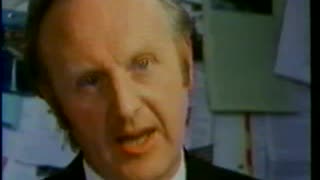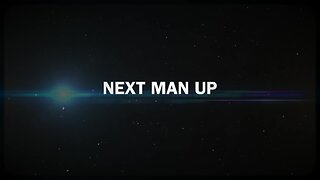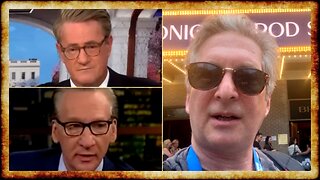How Corporations Clandestinely Helped South Africa Build a Nuclear Bomb
The dark side of history: https://thememoryhole.substack.com/
From the 1960s to the 1990s, South Africa pursued research into weapons of mass destruction, including nuclear,[2] biological, and chemical weapons under the apartheid government. South Africa’s nuclear weapons doctrine was designed for political leverage rather than actual battlefield use, specifically to induce the United States of America to intervene in any regional conflicts between South Africa and the Soviet Union or its proxies.[3][4] To achieve a minimum credible deterrence, a total of six nuclear weapons were covertly assembled by the late 1980s.[5]
Before the anticipated changeover to a majority-elected African National Congress–led government in the 1990s, the South African government dismantled all of its nuclear weapons, the first state in the world which voluntarily gave up all nuclear arms it had developed itself. The country has been a signatory of the Biological Weapons Convention since 1975, the Treaty on the Non-Proliferation of Nuclear Weapons since 1991, and the Chemical Weapons Convention since 1995. In February 2019, South Africa ratified the Treaty on the Prohibition of Nuclear Weapons, becoming the first country to have had nuclear weapons, disarmed them and gone on to sign the treaty.[citation needed]
Nuclear weapons
Nuclear weapons
Photograph of a mock-up of the Little Boy nuclear weapon dropped on Hiroshima, Japan, in August 1945.
Background
Nuclear explosion History Warfare Design Testing Delivery Yield
Effects Winter Workers Ethics
Arsenals Arms race Espionage Proliferation Disarmament Terrorism Opposition
Nuclear-armed states
NPT recognized
United States
Russia
United Kingdom
France
China
Others
India
Israel (undeclared)
Pakistan
North Korea
Former
South Africa
Belarus
Kazakhstan
Ukraine
vte
Further information: Nuclear programme of South Africa
The Republic of South Africa's ambitions to develop nuclear weapons began in 1948 after giving commission to South African Atomic Energy Corporation (SAAEC), the forerunner corporation to oversee the nation's uranium mining and industrial trade.[1] In 1957, South Africa reached an understanding with the United States after signing a 50-year collaboration under the U.S.-sanctioned programme, Atoms for Peace.[1] The treaty concluded the South African acquisition of a single nuclear research reactor and an accompanying supply of highly enriched uranium (HEU) fuel, located in Pelindaba.[1]
Research programs
In 1965, the U.S. subsidiary, the Allis-Chalmers Corporation, delivered the 20 MW research nuclear reactor, SAFARI-1, along with ~90% HEU fuel to South African nuclear authority.[1] In 1967, South Africa decided to pursue plutonium capability and constructed its own reactor, SAFARI-2 reactor also at Pelindaba, that went critical using 606 kg of 2% enriched uranium fuel, and 5.4 tonnes of heavy water, both supplied by the United States.[1]
The SAFARI-2 reactor was intended to be moderated by heavy water, fuelled by natural uranium while the reactor's cooling system used molten sodium.[1] In 1969, the project was abandoned by the South African government because the reactor was draining resources from the uranium enrichment program that had begun in 1967.[1] South Africa began to focus on the success of its uranium enrichment programme which was seen by its scientists as easier compared to plutonium.[1]
South Africa was able to mine uranium ore domestically, and used aerodynamic nozzle enrichment techniques to produce weapons-grade material. In 1969, a pair of senior South African scientists met with Sultan Bashiruddin Mahmood, a nuclear engineer from Pakistan based at the University of Birmingham, to conduct studies, research and independent experiments on uranium enrichment.[6] The South African and Pakistani scientists studied the use of aerodynamic-jet nozzle process to enrich the fuel at the University of Birmingham, later building their national programs in the 1970s.[6]
South Africa gained sufficient experience with nuclear technology to capitalise on the promotion of the U.S. government's Peaceful Nuclear Explosions (PNE) program.[1] Finally in 1971, South African minister of mines Carl de Wet gave approval of the country's own PNE programme with the publicly stated objective of using PNEs in the mining industry. The date when the South African PNE programme transformed into a weapons program is a matter of some dispute.[1] The possibility of South Africa collaborating with France[7] and Israel in the development of nuclear weapons was the subject of speculation during the 1970s.[8]
Nuclear Weapons strategy
Unlike many other countries' nuclear weapons doctrine, South Africa’s strategy envisioned no actual battlefield use of nuclear weapons. Although it was designed to be a bluff, South Africa had to be perceived as having the means and resolve to use nuclear weapons militarily. The goal was to deter aggression, not to be involved in a nuclear war that South Africa could not survive.
South Africa’s doctrine for the use of nuclear weapons was not based on war-fighting, but rather was intended as a political strategy designed to force Western powers (primarily the United States of America) to assist South Africa against an overwhelming military threat to its territory, such as Soviet-backed forces overrunning South African Defence Forces in Angola and then invading South Africa itself. If political and military instability in southern Africa became unmanageable, the South African government believed a demonstration of its nuclear capability, such as an underground nuclear weapons test in the Kalahari desert, would provoke the Soviet Union to threaten the United States with a dangerously escalating military confrontation unless South Africa was constrained, which in turn would motivate the United States to intervene and seek an end to the conflict in Angola.[9][4]
In 1978, the South African Defense Force chief of staff for planning, Army Brigadier John Huyser, produced a confidential memorandum outlining the potential elements of a nuclear strategy:[10]
Five to six nuclear weapons would be developed and kept "on the shelf"
Should the South African Defence Forces find itself in a situation where its conventional forces were facing a catastrophic defeat, the existence of the South Africa's nuclear weapons would be conveyed to Western countries (primarily the United States) in a covert manner
If this does not alleviate the problem, an underground test will be performed to demonstrate the South Africa's nuclear capability, and finally, an above-ground test, if the threat persists
In November 1986, a secret “Kramat Capability” document was approved by the South African Minister of Defense Magnus Malan, which set out an official nuclear strategy for the first time.[11] The escalating, three phase deterrent strategy provided a roadmap for identifying the requirements for progressing through successive phases:
Phase 1: Strategic Uncertainty - during this phase the existence of the capability will be denied
Phase 2: Covert Condition - during this phase the nuclear capability will be covertly revealed as a means of inducement, persuasion, and coercion
Phase 3: Overt Deterrent - during this phase the following actions will be considered:
Overt announcement
Display of force
Demonstration (underground or atmospheric test explosion)
Threatened use
Battlefield application as deterrent against conventional assault forces
The document also stated: "In order to carry out this strategy with credibility, the following weapon systems are required:"
Air-launched weapon for atmospheric demonstration test and use in battle
Explosive device for underground demonstration test
Long-range ballistic missile for threat of strategic use
The "Strategic Uncertainty" phase would include a policy of deliberate ambiguity, with the South African nuclear capability neither being acknowledged nor denied. South African politicians would also leak information to create uncertainty and worry amongst South Africa's rivals.
The "Covert Condition" phase would occur if South African territorial integrity was threatened by the Soviet Union or Soviet-backed forces, where the government would covertly inform leading Western governments (particularly the United States and Britain) about the existence of its nuclear arsenal and request their assistance to eliminate the military threat it faced.
Finally, the "Overt Deterrent" phase included a series of escalatory successive steps intended to force the intervention of the United States and other leading Western countries on behalf of South Africa to stop whatever war it was involved in. Starting with a public announcement of the existence of a nuclear arsenal, and inviting foreign experts to inspect the warheads and their delivery systems to confirm they were viable for battlefield use, an underground nuclear test would be followed by an atmospheric test from an air launched weapon hundreds of miles from the coast of South Africa, before finally carrying out a nuclear strike on enemy forces marshaling for a conventional military attack on South Africa itself.[12]
Nuclear Weapons production
The South African covert nuclear weapons production line and high security storage vaults were located in the Kentron Circle building on the Gerotek vehicle testing facility owned by Armscor on the outskirts of Pretoria. At its secret opening ceremony on 4 May 1981, Prime Minister P.W. Botha described the nuclear deterrent as a "political weapons system" rather than a military one, as it would primary be used for leverage in international negotiations.[13]
"The time has come when the South African “Plowshare” must be forged into a sword, for the battle that awaits ... a weapon of inducement, persuasion, and compulsion in the hands of the leaders of the world. This political weapon opens a new possibility, the option for the Republic of South Africa to stipulate its birthright at the negotiating table of the Greats, with nuclear deterrence strategy as its foundation."[14]
Prime Minister P.W. Botha speech at the opening of the Kentron Circle covert nuclear weapons facility in May 1981
South Africa developed a small finite deterrence arsenal of gun-type fission weapons in the 1980s. Six were constructed and another was under construction at the time the program ended.[15]
As the final production model contained a relatively large amount of highly enriched uranium (HEU), much effort was expended to ensure the physical safety of the nuclear warheads, with Armscor technicians creating many safety features. The cornerstone control feature was for each nuclear device to be divided into two subsections, a Front End and a Back End, with the HEU split between the two. This enabled strict security procedures to be enforced, such as storing each subsection in separate vaults with different codes for each door, which were intended to help prevent anyone from having easy access to an entire weapon system.[16]
nuclear weapon storage vaults in the Kentron Circle building
The fully assembled gun-type devices had enough HEU that they were near critical mass after final assembly. A major safety concern was the Back End propellant could prematurely fire, sending the projectile into the Front End and causing an accidental nuclear explosion. Another potential danger was the projectile accidentally sliding down the barrel, which at a minimum would cause a criticality accident and contaminate the immediate area. To prevent this, only after the device was armed and ready for use would the barrel rotate to line up the openings correctly. The barrel also contained holes to dissipate the pressure of the propellant firing, thus reducing the speed of the projectile, that were only closed after the weapon was armed and ready for use.[17]
South Africa only produced an operational weapon after Armscor took over production. In 1982, Armscor built the first operational weapon, code-named Hobo and later called Cabot. This device reportedly had a yield of 6 kilotons of TNT. It was eventually disassembled and the warhead reused in a production model bomb.[18] Armscor then built a series of pre-production and production models under the code-name Hamerkop (a bird). While Hobo/Cabot were not functional, the Hamerkop series were smart television-guided glide bombs.[18]
Bomb casings at South Africa's abandoned Circle nuclear bomb production facility near Pretoria. These most likely would have accommodated a gun-type nuclear package for air delivery
Testing the first device
The South African Atomic Energy Board (AEB) selected a test site in the Kalahari Desert at the Vastrap weapons range north of Upington. Two test shafts were completed in 1976 and 1977. One shaft was 385 metres deep, the other, 216 metres. In 1977, the AEB established its own high-security weapons research and development facilities at Pelindaba, and during that year the program was transferred from Somchem to Pelindaba. In mid-1977, the AEB produced a gun-type device—without a highly enriched uranium (HEU) core. Although the Y-Plant was operating, it had not yet produced enough weapons-grade uranium for a device. As has happened in programmes in other nations, the development of the devices had outpaced the production of the fissile material.
Atomic Energy Commission officials say that a "cold test" (a test without uranium-235) was planned for August 1977. An Armscor official who was not involved at the time said that the test would have been a fully instrumented underground test, with a dummy core. Its major purpose was to test the logistical plans for an actual detonation.
How that test was cancelled has been well publicised. Soviet intelligence detected test preparations and in early August alerted the United States; US intelligence confirmed the existence of the test site with an overflight of a Lockheed SR-71 spy plane.[19] On 28 August, The Washington Post quoted a US official: "I'd say we were 99 percent certain that the construction was preparation for an atomic test."[20]
The Soviet and Western governments were convinced that South Africa was preparing for a full-scale nuclear test. During the next two weeks in August, the Western nations pressed South Africa not to test. The French foreign minister warned on 22 August of "grave consequences" for French-South African relations.[21] Although he did not elaborate, his statement implied that France was willing to cancel its contract to provide South Africa with the Koeberg nuclear power reactors.
In 1993, Wynand de Villiers said that when the test site was exposed, he ordered its immediate shutdown. The site was abandoned and the holes sealed. One of the shafts was temporarily reopened in 1988 in preparation for another test, which did not take place; the move was intended to strengthen South Africa's bargaining position during negotiations to end the war with Angola and Cuba.[22]
Viable delivery
A SAAF Canberra T.4
Main article: Jericho (missile) § South African RSA Series
A RSA-3 3 stage LEO rocket
The warheads were originally configured to be delivered from one of several aircraft types then in service with the South African Air Force (SAAF), including the Canberra B12 and the Hawker Siddeley Buccaneer. Concerns about the vulnerability of the ageing aircraft to the Cuban anti-aircraft defence network in Angola subsequently led the SADF to investigate missile-based delivery systems.[23]
The missiles were to be based on the RSA-3 and RSA-4 launchers that had already been built and tested for the South African space programme. According to Al J Venter, author of How South Africa Built Six Atom Bombs, these missiles were incompatible with the available large South African nuclear warheads. Venter claims that the RSA series, being designed for a 340 kg payload, would suggest a warhead of some 200 kg, "well beyond SA's best efforts of the late 1980s." Venter's analysis is that the RSA series was intended to display a credible delivery system combined with a separate nuclear test in a final diplomatic appeal to the world powers in an emergency even though they were never intended to be used in a weaponized system together.[24]
Three rockets had already been launched into suborbital trajectories in the late 1980s in support of development of the RSA-3 launched Greensat Orbital Management System (for commercial satellite applications of vehicle tracking and regional planning). Following the decision in 1989 to cancel the nuclear weapons program, the missile programs were allowed to continue until 1992, when military funding ended, and all ballistic missile work was stopped by mid-1993. In order to join the Missile Technology Control Regime, the government had to allow American supervision of the destruction of key facilities applicable to both the long-range missile and the space launch programmes.[25]
Collaboration with Israel
See also: Israel–South Africa Agreement
David Albright and Chris McGreal reported that South African projects to develop nuclear weapons during the 1970s and 1980s were undertaken with long-term cooperation from Israel.[26][27][28] The United Nations Security Council Resolution 418 of 4 November 1977 introduced a mandatory arms embargo against South Africa, also requiring all states to refrain from "any co-operation with South Africa in the manufacture and development of nuclear weapons".[29]
According to the Nuclear Threat Initiative, in 1977 Israel traded 30 grams of tritium for 50 tonnes of South African uranium, and in the mid-1980s assisted with the development of the RSA-3 and RSA-4 ballistic missiles, which are similar to the Israeli Shavit and Jericho missiles.[30] Also in 1977, according to foreign press reports, it was suspected that South Africa signed a pact with Israel that included the transfer of military technology and the manufacture of at least six nuclear bombs.[31]
In September 1979, a US Vela satellite detected a double flash over the Indian Ocean that was suspected, but never confirmed, to be a nuclear test, despite extensive air sampling by WC-135 aircraft of the United States Air Force. If the Vela incident was a nuclear test, South Africa is virtually the only possible country, potentially in collaboration with Israel, which could have carried it out. No official confirmation of its being a nuclear test has been made by South Africa. In 1997, South African Deputy Foreign Minister Aziz Pahad stated that South Africa had conducted a test, but later retracted his statement as being a report of rumours.[32]
In February 1994, Commodore Dieter Gerhardt, former commander of South Africa's Simon's Town naval base who was later convicted of spying for the USSR, was reported to have said:
Although I was not directly involved in planning or carrying out the operation, I learned unofficially that the flash was produced by an Israeli-South African test code-named Operation Phoenix. The explosion was clean and was not supposed to be detected. But they were not as smart as they thought, and the weather changed – so the Americans were able to pick it up.[33][34]
In 2000, Gerhardt said that Israel agreed in 1974 to arm eight Jericho II missiles with "special warheads" for South Africa.[35]
In 2010, The Guardian released South African government documents that confirmed the existence of Israel's nuclear arsenal. According to The Guardian, the documents were associated with an Israeli offer to sell South Africa nuclear weapons in 1975.[36][37] Israel categorically denied these allegations and claimed the documents do not indicate any offer for a sale of nuclear weapons. Israeli President Shimon Peres claimed that The Guardian article was based on "selective interpretation... and not on concrete facts."[38] Avner Cohen, author of Israel and the Bomb and The Worst-Kept Secret: Israel's Bargain with the Bomb, said "Nothing in the documents suggests there was an actual offer by Israel to sell nuclear weapons to the regime in Pretoria."[39]
Collaboration with Taiwan
According to David Albright and Andrea Strickner, South Africa also engaged in close, long-term cooperation with Taiwan, which at the time was controlled by the autocratic KMT regime, sometimes along with the Israelis. Taiwan bought 100 tons of uranium metal from South Africa which was delivered between 1973 and 1974. In 1980 the Taiwanese contracted for 4,000 tons of uranium metal although it is not known how much of this order was ever delivered. In 1983 Taiwan and South Africa agreed to cooperate on laser enrichment, chemical enrichment, and building a small reactor. The South African reactor program was slowed down in 1985 due to budget cuts and was cancelled completely half a decade later. The enrichment programs also likely ended around this time.[40]
Dismantling
South African forces feared the threat of a "domino effect" in favour of communism, represented in southern Africa by Cuban forces in Angola, aiding Angolan Marxist-Leninist revolutionary groups against rivals supported by South African forces, and threatening Namibia. In 1988, South Africa signed the Tripartite Accord with Cuba and Angola, which led to the withdrawal of South African and Cuban troops from Angola and independence for Namibia. The pre-emptive elimination of nuclear weapons was expected to make a significant contribution toward regional stability and peace, and also to help restore South Africa's credibility in regional and international politics. F.W. de Klerk saw the presence of nuclear weapons in South Africa as a problem. F. W. de Klerk disclosed the information about his weapons to the United States in an effort to get the weapons removed.[41]
South Africa ended its nuclear weapons programme in 1989. All the bombs (six constructed and one under construction) were dismantled and South Africa acceded to the Treaty on the Non-Proliferation of Nuclear Weapons in 1991. On 19 August 1994, after completing its inspection, the International Atomic Energy Agency (IAEA) confirmed that one partially completed and six fully completed nuclear weapons had been dismantled. As a result, the IAEA was satisfied that South Africa's nuclear programme had been converted to peaceful applications. Following this, South Africa joined the Nuclear Suppliers Group (NSG) as a full member on 5 April 1995. South Africa played a leading role in the establishment of the African Nuclear-Weapon-Free Zone Treaty (also referred to as the Treaty of Pelindaba) in 1996, becoming one of the first members in 1997. South Africa also signed the Comprehensive Nuclear-Test-Ban Treaty in 1996 and ratified it in 1999.
In 1993, Bill Keller of The New York Times reported that popular suspicion in Southern African nations held that the timing of disarmament indicated a desire to prevent a nuclear arsenal from falling into the hands of a native African and Coloured government with the collapse of the Apartheid system controlled by European settlers.[4] De Klerk denied such a motivation when asked about this in a 2017 interview.[41] The African National Congress political party, which took power in South Africa after Apartheid, approved of nuclear disarmament.[4]
The Treaty of Pelindaba came into effect on 15 July 2009 once it had been ratified by 28 countries.[42] This treaty requires that parties will not engage in the research, development, manufacture, stockpiling acquisition, testing, possession, control or stationing of nuclear explosive devices in the territory of parties to the treaty and the dumping of radioactive wastes in the African zone by treaty parties. The African Commission on Nuclear Energy, in order to verify compliance with the treaty, has been established and will be headquartered in South Africa.[43]
South Africa signed the Treaty on the Prohibition of Nuclear Weapons on 20 September 2017, and ratified it on 25 February 2019.[44]
Weapons grade uranium stores
As of 2015, South Africa still possessed most of the weapons grade uranium extracted from its nuclear weapons, and had used some of it to produce medical isotopes.[45] There had been three security breaches at Pelindaba since the end of Apartheid, with a 2007 breach described by a former US official as being "horrifying", although the South African government dismissed the 2007 breach as a "routine burglary".[46]
Timeline of South African nuclear weapons programme[47] Year Activity
1950s and 1960s Scientific work on the feasibility of peaceful nuclear explosives and support to nuclear power production efforts
1969 Atomic Energy Board forms group to evaluate technical and economic aspects of nuclear explosives
1970 Atomic Energy Commission (AEC) releases report identifying uses for nuclear explosives
1971 R&D approval granted for "peaceful use of nuclear explosives"
1973 AEC prioritises work on a gun-type design
1974 Work on a nuclear device and the Vastrap test site are authorised
1977 AEC completes bomb assembly for "cold" test
1978 First HEU produced; Armscor assumes control of weapons programme
1979 Vela incident; First bomb with HEU core produced by AEC
1982 First deliverable bomb built; work on weapons safety
1985 Three-phase nuclear strategy reviewed
1987 First production bomb built; seven produced, with an eighth under construction
1988 Armscor prepares Vastrap for a nuclear test
1989 Nuclear weapons dismantled
1991 Accedes to NPT
Biological and chemical weapons
Main article: Project Coast
In October 1998, the report of the South African Truth and Reconciliation Commission publicly revealed Project Coast, a clandestine government chemical and biological warfare program conducted during the 1980s and 1990s. Project Coast was initiated in 1981 and initially, defensive aspects were the prime objective but as time progressed, offensive programmes became more pervasive and more important.[48] It became the sole programme for the creation of a range of chemical and biological agents for offensive and defensive use within South Africa as well as neighbouring territories.[49] Two categories of offensive products were developed:
weapons for mass destruction; here the research focused mostly on biological development processes, especially for run-of-the-mill bacteria including anthrax, tetanus, cholera and especially food poisoning agents such as salmonella bacteria.[50]
secondly, researching and developing weapons in the “dirty tricks" program, where products could be supplied for individual assassinations. These consisted of toxins in chemical, plant and in biological nature.[50]
On the defensive side, Project Coast oversaw research into the development of agents to protect troops in battle and VIPs[48] against chemical or biological attack.[51] The project was also tasked with developing CS and CR gas agents for crowd control,[52] developing defensive training programs for troops and developing protective clothing.[49]
The program reported to the South African Defence Force Surgeon General (Maj. Gen. N. J. Nieuwoudt (1980-1988) and Maj. Gen. D.P. Knobel (1988–1998)).[49] Nieuwoudt recruited South African cardiologist and army officer Brig. Wouter Basson (1981–1992) as Project Officer and ultimately Nieuwoudt and Basson recruited a large contingent of medical professionals, scientists and weapons specialists to research and develop these weapons and associated antidotes. Basson was replaced by Col. Ben Steyn in 1992 (1992–1995).[49] Several front companies were created, including Delta G Scientific Company, Protechnik and Roodeplaat Research Laboratories to facilitate the research and development of chemical and biological weapons.[53]
After Basson's arrest in 1997, documents found in his possession revealed that the "dirty-tricks" products included anthrax-laced cigarettes, household items contaminated with organophosphates[54] and paraoxon-laced gin and whisky.[49] Other unverified claims include that a so-called infertility toxin[clarification needed] was introduced into black townships, and that cholera was deliberately introduced into the water sources of some South African villages. It was also claimed that South Africa supplied anthrax and cholera to government troops in Rhodesia (now Zimbabwe), which it is alleged were used against guerrillas there.[55][56] In January 1992, the government of Mozambique alleged that either South Africa, or South African backed Renamo forces deployed an artillery-delivered airburst chemical weapon during a battle at a rebel base in Tete province. Five soldiers were said to have died, and many more were injured.[57] South African military and civilian doctors collected samples from the Mozambican government, and denied any involvement in the matter. The programme operated until 1993.[58][59][60]
See also
History of biological warfare
Helikon vortex separation process
Military history of South Africa
Nuclear weapons and Israel
Denel Overberg Test Range
Cold War
Notes
Executive release. "South African nuclear bomb". Nuclear Threat Initiatives. Nuclear Threat Initiatives, South Africa (NTI South Africa). Archived from the original on 28 September 2012. Retrieved 13 March 2012.
Von Wielligh, N. & von Wielligh-Steyn, L. (2015). The Bomb: South Africa’s Nuclear Weapons Programme. Pretoria: Litera.
Albright, David; Stricker, Andrea (2016). Revisiting South Africa's Nuclear Weapons Program (PDF). Washington, D.C.: Institute for Science and International Security. ISBN 978-1536845655. LCCN 2018910946.
Keller, Bill (25 March 1993). "South Africa Says It Built 6 Atom Bombs". The New York Times. p. A1. Archived from the original on 29 October 2017. Retrieved 25 April 2021.
John Pike. "Nuclear Weapons Program – South Africa". Globalsecurity.org. Archived from the original on 25 May 2011. Retrieved 15 May 2011.
Chaudhry, PhD (Political science), M.A. "Separating Myth from Reality§ The Uranium Enrichment programme: Building Kahuta Research Laboratories (KRL)". M.A. Chaudhry's article published at The Nation, 1999. Archived from the original on 8 July 2011. Retrieved 5 March 2012.
"Carl Rowan: South Africa emulates Nazi Germany (1977)". The Sedalia Democrat. 26 October 1977. p. 19. Archived from the original on 31 August 2017. Retrieved 31 August 2017.
"Scenarios Always See Confrontation (Israel, South Africa, nuclear weapons) (1977)". Colorado Springs Gazette-Telegraph. 24 November 1977. p. 137. Archived from the original on 31 August 2017. Retrieved 31 August 2017.
Albright, David; Stricker, Andrea (2016). Revisiting South Africa's Nuclear Weapons Program (PDF). Washington, D.C.: Institute for Science and International Security. ISBN 978-1536845655. LCCN 2018910946.
Albright, David; Stricker, Andrea (2016). Revisiting South Africa's Nuclear Weapons Program (PDF). Washington, D.C.: Institute for Science and International Security. ISBN 978-1536845655. LCCN 2018910946.
Albright, David; Stricker, Andrea (2016). Revisiting South Africa's Nuclear Weapons Program (PDF). Washington, D.C.: Institute for Science and International Security. ISBN 978-1536845655. LCCN 2018910946.
Albright, David; Stricker, Andrea (2016). Revisiting South Africa's Nuclear Weapons Program (PDF). Washington, D.C.: Institute for Science and International Security. ISBN 978-1536845655. LCCN 2018910946.
Albright, David; Stricker, Andrea (2016). Revisiting South Africa's Nuclear Weapons Program (PDF). Washington, D.C.: Institute for Science and International Security. ISBN 978-1536845655. LCCN 2018910946.
Albright, David; Stricker, Andrea (2016). Revisiting South Africa's Nuclear Weapons Program (PDF). Washington, D.C.: Institute for Science and International Security. ISBN 978-1536845655. LCCN 2018910946.
"South Africa: Nuclear Case Closed?" (PDF). National Security Archive. 19 December 1993. Archived (PDF) from the original on 29 August 2008. Retrieved 26 August 2008.
Albright, David; Stricker, Andrea (2016). Revisiting South Africa's Nuclear Weapons Program (PDF). Washington, D.C.: Institute for Science and International Security. ISBN 978-1536845655. LCCN 2018910946.
Albright, David; Stricker, Andrea (2016). Revisiting South Africa's Nuclear Weapons Program (PDF). Washington, D.C.: Institute for Science and International Security. ISBN 978-1536845655. LCCN 2018910946.
Lewis, Jeffrey (3 December 2015). "Revisiting South Africa's Bomb". Arms Control Wonk. Leading Voices on Arms Control, Disarmament and Non-Proliferation. Archived from the original on 6 December 2015. Retrieved 6 December 2015.
U.S. Military Involvement in Southern Africa. South End Press. 1978. ISBN 978-0-89608-041-6.
Albright, David (July 1994). "South Africa and the Affordable Bomb". Bulletin of the Atomic Scientists. Jul 1994 (4): 41. Bibcode:1994BuAtS..50d..37A. doi:10.1080/00963402.1994.11456538.
"South Africa is about to test atomic bomb, France claims (1977)". Valley News. 23 August 1977. p. 3. Archived from the original on 31 August 2017. Retrieved 31 August 2017.
Frank V. Pabian. "South Africa's Nuclear Weapon Program: Lessons For U.S. Non Proliferation Policy" (PDF). James Martin Center for Nonproliferation Studies. p. 8. Archived (PDF) from the original on 7 April 2010. Retrieved 8 December 2008.
Horton, Roy E. (6 May 2018). Out of (South) Africa: Pretorias Nuclear Weapons Experience. DIANE Publishing. ISBN 9781428994843. Retrieved 6 May 2018 – via Google Books.
Engelbrecht, Leon. "Book Review: How SA built six atom bombs - defenceWeb". www.defenceweb.co.za. Archived from the original on 26 August 2014. Retrieved 6 May 2018.
"Jericho". 29 May 2010. Archived from the original on 29 May 2010. Retrieved 6 May 2018.
Chris McGreal (7 February 2006). "Brothers in arms — Israel's secret pact with Pretoria". The Guardian. London. Archived from the original on 25 July 2008.
Albright D (August 1994). "South Africa and the Affordable Bomb". Bulletin of the Atomic Scientists. 50 (4): 37–47. Bibcode:1994BuAtS..50d..37A. doi:10.1080/00963402.1994.11456538.
"RSA Nuclear Weapons Program". Federation of American Scientists. Archived from the original on 7 October 2006.
"UNSCR 418 of 4 November 1977: States should refrain from "any co-operation with South Africa in the manufacture and development of nuclear weapons"". United Nations. Archived from the original on 17 August 2011. Retrieved 15 May 2011.
"South Africa: Missile". Nuclear Threat Initiative. November 2011. Archived from the original on 13 May 2013.
"P.W. Botha felt Israel had betrayed him". Jerusalem Post. 2 November 2006. Archived from the original on 6 July 2013. Retrieved 2 November 2006.
"Aziz Pahad's statement and retraction discussed here". Archived from the original on 24 February 2011. Retrieved 15 May 2011.
South Africa and the affordable bomb, David Albright, The Bulletin of the Atomic Scientists Archived 28 January 2018 at the Wayback Machine Jul 1994, pp 37.
Proliferation: A flash from the past David Albright, The Bulletin of the Atomic Scientists Archived 28 January 2018 at the Wayback Machine Nov 1997, pp. 15
"Tracking Nuclear Proliferation". PBS Newshour. 2 May 2005. Archived from the original on 11 December 2013.
McGreal, Chris (24 May 2010). "Revealed: how Israel offered to sell South Africa nuclear weapons". The Guardian. UK. Archived from the original on 25 May 2010. Retrieved 24 May 2010.
McGreal, Chris (24 May 2010). "The memos and minutes that confirm Israel's nuclear stockpile". The Guardian. UK. Archived from the original on 25 May 2010. Retrieved 24 May 2010.
Kershner, Isabel (24 May 2010). "Israel Denies It Offered South Africa Warheads". The New York Times. Archived from the original on 30 June 2017.
"Avner Cohen: Yitzhak Rabin would have opposed sale of nuclear weapons". The Independent. London. 25 May 2010. Archived from the original on 19 September 2011.
Strickner, Andrea; Albright, David. "Taiwan's Former Nuclear Weapons Program" (PDF). isis-online.org. ISIS. Retrieved 9 June 2021.
Friedman, Uri (9 September 2017). "Why One President Gave Up His Country's Nukes". The Atlantic. Archived from the original on 22 September 2017. Retrieved 20 June 2018.
disarmament.un.org - Pelindaba Treaty - View chronological order by deposit
"African Nuclear Weapons Free Zone Treaty". Department of Foreign Affairs, Republic of South Africa. Archived from the original on 21 August 2006. Retrieved 28 July 2006.
"UNODA Treaties". treaties.unoda.org.
"U.S. Frets over South African vault with enough fuel for 6 nuclear bombs". The Washington Post.
"How armed intruders stormed their way into a South African nuclear plant". The Washington Post.
Roy E. Horton, USAF Institute for National Security Studies (1999). Out of (South) Africa: Pretoria's Nuclear Weapons Experience. Dianne Publishing. p. 17. ISBN 9781428994843.
Stiff, Peter (2001). Warfare by other means: South Africa in the 1980s and 1990s. Galago Press. pp. 96–97. ISBN 1-919854-01-0.
Gould, Chandré; Folb, Peter. "Project Coast: Apartheid's Chemical and Biological Warfare Programme" (PDF). United Nations Institute for Disarmament Research. Archived from the original (PDF) on 13 September 2012.
"Frontline: Interview with Dr. Daan Goosen: Former Managing Director: Roodeplaat Research Laboratories". PBS & WGBH educational foundation.
"Frontline: Interview with Ronnie Kasrils: Deputy Defence Minister, South Africa". PBS & WGBH educational foundation.
"Special Hearings: Chemical and Biological Warfare Hearings". Truth Commission Special Report. 1998.
Helen E. Purkitt; Stephen Franklin Burgess (2005). South Africa's Weapons of Mass Destruction. Indiana University Press. pp. 94–98. ISBN 978-0-253-21730-1. Archived from the original on 6 May 2018.
"The South Africa Chamical and Biological Weapons Program: An Overview" (PDF). The Nonproliferation Review. 2000. p. 13.
"What Happened In South Africa? - Plague War - FRONTLINE," PBS, October 29, 1998, https://www.pbs.org/wgbh/pages/frontline/shows/plague/sa/
"The History of the Use of Bacteriological and Chemical Agents during Zimbabwe's Liberation War of 1965-80 by Rhodesian Forces," Third World Quarterly Vol. 23, No. 6 (Dec., 2002), pp. 1159-1179
"South Africa Chemical Overview". Nuclear Threat Initiaitve.
"South Africa - Countries". NTI. 29 October 1998. Archived from the original on 24 February 2018. Retrieved 23 February 2018.
"What Happened In South Africa? - Plague War". FRONTLINE. PBS. 18 November 2015. Archived from the original on 24 February 2018. Retrieved 23 February 2018.
Singh, Jerome Amir (1 March 2008). "Project Coast: eugenics in apartheid South Africa". Endeavour. 32 (1): 5–9. doi:10.1016/j.endeavour.2008.01.005. ISSN 0160-9327. PMID 18316125.
References
Joseph Cirincione, Jon B. Wolfsthal, Miriam Rajkumar. Deadly Arsenals: Nuclear, Biological, and Chemical Threats. Washington D.C.: Carnegie Endowment For International Peace, 2005.
Further reading
Burgess, Stephen F. and Helen E. Purkitt. The Rollback of South Africa's Chemical and Biological Warfare Program, USAF Counterproliferation Center. April 2001. Online. Archived 15 February 2017 at the Wayback Machine
Cross, Glenn. Dirty War: Rhodesia and Chemical Biological Warfare, 1975–1980, Helion & Company, 2017.
Möser, Robin E. (2024). Disarming Apartheid: The End of South Africa's Nuclear Weapons Programme and Accession to the Treaty on the Non-Proliferation of Nuclear Weapons, 1968–1991. Cambridge University Press.
Polakow-Suransky, Sasha (2010). The Unspoken Alliance: Israel's Secret Relationship with Apartheid South Africa. New York: Pantheon Books. ISBN 978-0375425462.
External links
Wikimedia Commons has media related to Nuclear weapons program of South Africa.
Birth and Death of the South African Nuclear Weapons Programme, Waldo Stumpf, Atomic Energy Corporation of South Africa, October 1995
South Africa and the nuclear option, Marcus Duvenhage, 1998
Out of South Africa: Pretoria’s Nuclear Weapons Experience (in pdf), Lt. Col. Roy E. Horton, ACDIS Occasional Paper, Program in Arms Control, Disarmament, and International Security, University of Illinois, August 2000
Out of (South) Africa: Pretoria’s Nuclear Weapons Experience, Roy E. Horton, USAF Institute for National Security Studies, August 1999
Nuclear Files.org guide to proliferation – South Africa
The Nuclear Weapon Archive account of South Africa
Israel conducted nuclear experiment in 1979
South Africa's Nuclear Autopsy: The Risk Report, Wisconsin Project on Nuclear Arms Control, 1996
Nuclear verification in South Africa Archived 10 March 2016 at the Wayback Machine, Adolf von Baeckmann, Gary Dillon and Demetrius Perricos, IAEA Bulletin Volume 37 Number 1
Annotated bibliography for the South African Nuclear Program from the Alsos Digital Library for Nuclear Issues Archived 3 November 2013 at the Wayback Machine
South Africa's Nuclear Weapons Storage Vault
Israel and the South African Bomb
The Woodrow Wilson Center's Nuclear Proliferation International History Project The Wilson Center's Nuclear Proliferation International History Project contains primary source material on South Africa's nuclear weapons program.
vte
South Africa Foreign relations of South Africa
Bilateral relations
Africa
Algeria Angola Botswana Republic of the Congo Egypt Eswatini Ethiopia Ghana Kenya Lesotho Libya Madagascar Malawi Mauritius Mozambique Namibia Nigeria Rwanda Sahrawi Republic Tanzania Zambia Zimbabwe
Americas
Argentina Bolivia Brazil Canada Cuba Mexico Peru Trinidad and Tobago United States Uruguay
Asia
Azerbaijan Bangladesh China Hong Kong India Indonesia Iran Israel Japan Malaysia North Korea Pakistan Palestine Philippines Qatar Saudi Arabia Singapore Sri Lanka Taiwan Turkey United Arab Emirates
Europe
Bulgaria Denmark Finland France Germany Greece Ireland Italy Netherlands Poland Portugal Russia Serbia Spain Sweden Switzerland Ukraine United Kingdom
Oceania
Australia New Zealand
Multilateral relations
European Union Commonwealth of Nations BRICS G8+5 G20 IBSA SACU Africa–India Forum Summit African Union
Diplomacy
Diplomatic missions of South Africa Diplomatic missions in South Africa Department of International Relations and Cooperation UNSC reform South African National Antarctic Programme
vte
Political history of South Africa
Defunct polities
Kingdom of Mapungubwe (c. 1075–c. 1220) Dutch Cape Colony (1652–1806) Mthethwa Paramountcy (c. 1780–1817) Ndwandwe Kingdom (c. 1780–1819) Cape Colony (1795–1910) Zulu Kingdom (1816–1897) Natalia Republic (1839–1843) Natal Colony (1843–1910) Orange Free State (1854–1902) South African Republic (1856–1902) Griqualand East (1861–1879) Griqualand West (1870–1873) Goshen (1882–1883) Stellaland (1882–1885) Nieuwe Republiek (1884–1888) Upingtonia (1885–1887) Klein Vrystaat (1886–1891) Orange River Colony (1902–1910) Transvaal Colony (1902–1910) Union of South Africa (1910–1961) Transkei (1976–1994) Bophuthatswana (1977–1994) Venda (1979–1994) Ciskei (1981–1994)
Events
Pre-colonial
Bantu migrations Battle of Salt River
1652–1815
Dutch settlement French Huguenot settlement Khoikhoi–Dutch Wars Xhosa Wars Battle of Muizenberg Battle of Blaauwberg Anglo-Dutch Treaty of 1814
1815–1910
Mfecane 1820 Settlers Great Trek Boer Republics Transvaal Civil War Mineral Revolution Witwatersrand Gold Rush South African Wars South Africa Act 1909 (National Convention)
1910–1948
South West Africa campaign Maritz rebellion Rand Rebellion Great Depression 1946 African Mine Workers' Union strike Bantustans
Apartheid
1948 general election Apartheid legislation
Pass laws Internal resistance Coloured-vote constitutional crisis Defiance Campaign Congress of the People
Freedom Charter Women's March 1956 1957 Alexandra bus boycott Sharpeville massacre 1960 republic referendum International isolation
UN Resolution 1761 UNSC Resolution 591 Academic boycott Disinvestment Constructive engagement Tar Baby Option Sporting boycott
Olympics Rugby union Rivonia Trial Durban Moment Border War Israeli alliance
Israel–South Africa Agreement Mafeje affair Soweto Uprising Weapons of mass destruction Project Coast Church Street bombing 1983 constitutional referendum Langa massacre Rubicon speech Operation Vula Dakar Conference Transkei coup d'état Ciskei coup d'état Venda coup d'état Third Force CODESA
Storming of the Kempton Park World Trade Centre Bisho massacre 1992 apartheid referendum Saint James Church massacre Bophuthatswana crisis Shell House massacre
Post-
apartheid
1994 general election Government of National Unity Reconstruction and Development Programme Truth and Reconciliation Commission Arms Deal Floor crossing Soweto bombings African Renaissance Travelgate Xenophobia Attack on Kennedy Road Blikkiesdorp Marikana massacre 2012 Western Cape farm workers' strike Nkandlagate Racism 2014 platinum strike #RhodesMustFall protests #FeesMustFall student protests Tshwane riots 2019 service delivery protests 2019 Johannesburg riots COVID-19 pandemic 2020 Phala Phala Robbery 2021 unrest Lady R incident
Political culture
African nationalism Afrikaner Calvinism Afrikaner nationalism Anarchism Azania Baasskap Boerehaat Black Consciousness Movement Cape Independence Day of the Vow Greater South Africa Honorary whites Rooi gevaar Slavery Swart gevaar Uitlander Volkstaat
Defunct
organisations
Civic and political
organisations
Afrikaner Bond Afrikaner Broederbond Afrikaner Party AITUP APO AVF BPC Black Sash Boerestaat Party CDA CNIP CTEG COD Congress Alliance COSG CP DLF Dominion Party DP (1973–1977) DP (1989–2000) DPP DSM ECC FA FD Genootskap van Regte Afrikaners GNP Het Volk HNP (Herenigde) HNP (Herstigte) IDASA ID IP ISL Jeugkrag Johannesburg Reform Committee Labour Party (1910–1958) Labour Party (1969–1994) Liberal Party (1953–1968) NA NCP Natal Indian Congress NLP NNP NP NPP NRP NUSAS Occupy Orangia Unie Oranjewerkers Orde Boerevolk PAVN PFP Progressive Party (Cape Colony) Progressive Party PRP Radio Freedom Reform Party SABP SADECO SAIC SASO SAYCO SAYRCO South African Party (Cape Colony) South African Party (1911–1934) South African Party (1977–1980) TNIP Torch Commando UFP United Party Unionist Party Volksparty Workers Party WOSA
Trade unions and
social movements
APF BCM BLATU CNETU CTSWU FCWU FNETU FOSATU ICU IWW MUSA NEUM NURHS PAWE SAAPAWU SACTU SAIF SARHU SATUC Die Spoorbund UDF Umkosi Wezintaba
Paramilitary and
terrorist organisations
APLA ARM AWB BBB Boeremag Greyshirts MK Ossewabrandwag Orde van die Dood PAGAD SANF
Histories of
political parties
African National Congress Democratic Alliance Pan Africanist Congress of Azania
Category
vte
South Africa articles
History
Timeline
Years Early history Kingdom of Mapungubwe Kingdom of Mutapa Kaditshwene Dutch Cape Colony Mthethwa Paramountcy Ndwandwe Cape Colony Zulu Kingdom Orange Free State Transvaal Republic First Boer War Second Boer War Great Depression World War II Apartheid Border War Democratic South Africa
By topic
Economy Military
Geography
Biodiversity Climate
Climate change Districts Earthquakes Estuaries Forests Islands Lakes Mountain ranges Municipalities National parks Populated places Provinces Rivers Wildlife
Politics
Constitution Courts Corruption Elections Foreign relations Government Human rights Law Law enforcement Military Parliament Political parties President
timeline State security
Economy
Agriculture Banking Companies Communications Economic history Energy Foreign trade Income inequality Mining industry Rand (currency) State-owned enterprises Stock exchange Taxation Tourism Trade unions Transport Water and sanitation Wealth inequality
Society
Cannabis Crime Disability Education Feminism Health Healthcare Immigration Intersex Land invasion Languages LGBT Life expectancy Poverty Racism Religion Sexual violence Slum clearance Smoking Social issues Social movements Women Xenophobia
Culture
Architecture Art Cinema Cuisine (wine) HIV/AIDS Homelessness Literature Media Music National symbols Public holidays Sports World Heritage Sites
heritage sites
Demographics
South African Bantu-speaking peoples
Ndebele Pedi Sotho Swazi Tsonga Tswana Venda Xhosa Zulu Khoisan
Khoekhoe San people Whites
Afrikaners British Coloureds
Cape Coloureds Cape Malays Griquas Indians Chinese
OutlineIndex
Category Portal
Portal:
Nuclear technology
Categories:
South Africa and weapons of mass destructionWeapons of mass destruction by countryMilitary of South AfricaNuclear weapons programsForeign relations of South AfricaNuclear weapons of South AfricaIsrael–South Africa relationsAbandoned military projects of South Africa
-
 59:04
59:04
The Memory Hole
1 day agoTechnology Doesn't Liberate Workers, It Controls the Environment Where They Operate
551 -
 1:50:42
1:50:42
Twisted History
1 day agoIllegal Dumping
2.1K17 -
 1:00:59
1:00:59
Kimberly Guilfoyle
3 days agoOn Their Records, It's No Debate: Trump & Biden Face off in Atlanta, Live with Jeffery Clark & Tim Murtaugh | Ep. 137
64K66 -
 LIVE
LIVE
MissesMaam
1 hour agoEvil Achievement Grind | Stardew Valley 💚✨
254 watching -
 51:36
51:36
Line Drive Podcast
2 hours agoEven after debate debacle, Dems say Biden is fine!
9.83K10 -
 2:17:12
2:17:12
vivafrei
13 hours agoEp. 217: Biden Debate Debacle; SCOTUS Jan. 6; SCOTUS Chevron; Trump AND MORE!
121K464 -
 2:00:31
2:00:31
RealAmericasVoice
3 hours agoNEXT MAN UP: STEVE BANNON, CHARLIE KIRK, AND JACK POSOBIEC
17.5K21 -
 1:16:29
1:16:29
The Late Kick with Josh Pate
6 hours agoLate Kick Live Ep 526: FSU’s ACC Exit | SEC vs Texas & OU | Lanning Is Kirby | EASports CFB25
8.46K2 -
 LIVE
LIVE
Due Dissidence
9 hours agoLiberals' Post-Debate MELTDOWN CONTINUES, Russ Interviews 'Pod Save America' Fans in NYC
2,350 watching -
 27:33
27:33
Texas Strong
2 days agoThe Texas Revolution - Episode 01 - 06-28-24
14.9K3